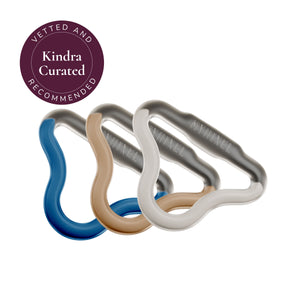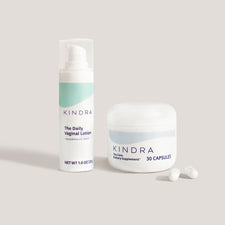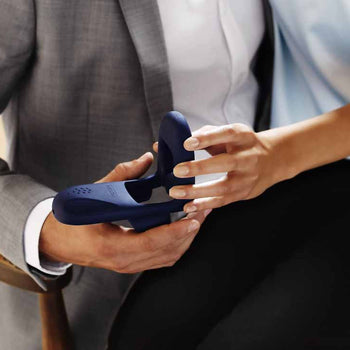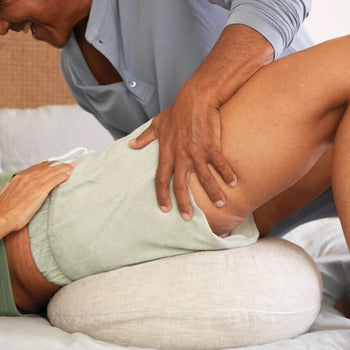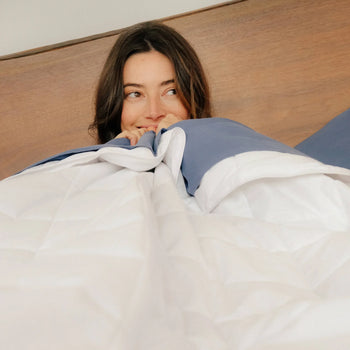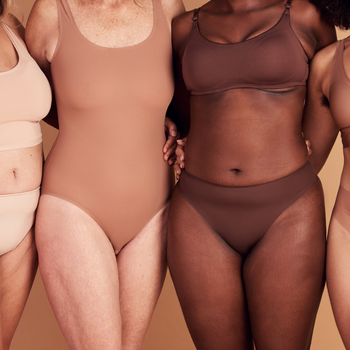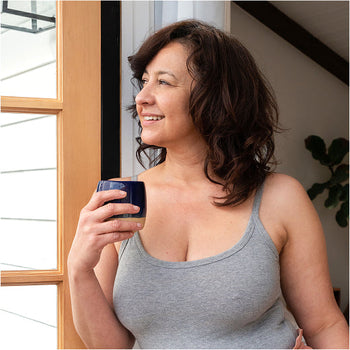Dr. Huian "Anan" Mathre, Kindra healthcare advisor and physical therapist discusses all things exercise and menopause.
There’s a natural tendency to view the body as weak and fragile as we get older. While there are unavoidable aspects to aging - at the end of the day, the human body is fundamentally strong and built for movement. Movement is medicine for the body.
Sometimes whether it’s due to a fear of injury, lack of motivation, not enough time, or being overwhelmed with where to start, we stop moving. Menopause is an opportunity to embrace exercise and movement. It can be a part of the day carved out just for you. Exercise can help to ease menopause-related concerns and improve overall enjoyment in life.
Before we dive in, it’s important to note that you should always reach out to your doctor before starting a new exercise routine. They can provide you with individualized medical advice and help to guide you in what types of movement are the best fit for you.
Weight gain is common during midlife and menopause. Can exercise help?
Loss of estrogen can result in the redistribution of weight to the abdomen as well as decreased metabolism. Sarcopenia, the loss of muscle mass, is also more common as we age. Regular exercise burns more calories which can help offset these effects. Strength training, using body weight, handheld weights, or resistance bands, helps to build muscles. With more muscle mass, your body burns more calories and has a higher metabolism, even at rest.
Bone density is a concern during menopause. How does exercise affect bone health? Are certain exercises better for targeting bone density?
Loss of estrogen affects bone density and bone strength which can lead to osteoporosis and increases the risk of fractures. There are three main categories of exercises that help with bone health.
-
Weight bearing, high impact exercises: Jogging, tennis, dancing, and jumping.
-
Weight bearing low impact exercises: Walking and the elliptical machine.
-
Strength training: Lifting weights, using resistance bands, weight machines, and body weight exercises like squats.
Talk to your doctor before starting a new exercise program to understand your bone density levels. Those that have low bone density should avoid certain exercise positions and the high impact exercises. All of the three above categories are excellent for building healthy bones. Bone tissue is built when muscles are challenged and contract, which exerts pressure on the areas where the muscle attaches to the bone. This pressure causes the body to produce additional bone tissue and increase bone density.
There are some exercises like cycling, swimming and stretches which have other excellent health benefits but do not stimulate bone density growth.
Can exercise directly impact menopause concerns - hot flashes, libido, trouble sleeping etc?
Absolutely. Studies have shown that exercise can reduce some of the disruptive concerns of menopause. Pelvic floor strengthening can help alleviate some causes of painful sex. Aerobic activity can help with hot flashes and trouble sleeping at night. For additional hot flash support, consider the Kindra Core Supplement, formulated with clinically studies ingredients shown to improve sleep, brain fog, hot flashes, night sweats, and even hydration from the inside out. Regular exercise can decrease overall stress and cortisol levels. It can also increase body confidence and boost mood. While low energy related to menopause might make it difficult to increase your activity, regular exercise increases overall energy levels. It may be helpful to try a supplement like Kindra’s Focus Supplement just before you exercise. The formula helps with mental clarity, mood and stamina and can help give you the extra boost to get started!
Are there other benefits to exercise specifically related to midlife and menopause?
As we get older, balance can get worse for a multitude of reasons. One of the biggest ways to work on this is improving overall strength. Incorporating Tai Chi or yoga positions can also challenge and improve balance directly.
Decreased estrogen levels in menopause can lead to hypertension as well as increase risk of heart disease. Aerobic exercise like swimming, dance class, bike ride, walking, jogging etc can significantly lower the risk of cardiac issues.
Vaginal atrophy, the thinning of the vaginal tissues as well as decreased lubrication is also caused by a reduction in estrogen. Aerobic exercise increases blood flow to the intimate area which helps to support those tissues and increase arousal. For extra comfort that is crucial during exercise and soothing relief, Kindra's Daily Vaginal Lotion supports skin-moisture barrier healing, with 95% of women reporting meaningful improvement with as little as two uses.
What kind of exercises should be included in a routine and how often should someone be exercising?
The ideal exercise program includes both aerobic exercise and strength training. The American Heart Association recommends at least 150 minutes of moderate intensity aerobic exercise a week for cardiovascular benefits. Moderate intensity exercise means that you should be able to talk, but not sing, and you should not be breathless. 150 minutes a week equates to 30 minutes a day, 5 days a week. If this seems overwhelming, build up to this goal gradually.
It’s important to also supplement resistance exercises for bone health, increased muscle mass, and increased metabolism. Resistance bands, weight machines, and body weight exercises are all excellent options. Aim for 3 sets of 12 repetitions per exercise. Use a resistance or weight where you feel that you probably wouldn’t be able to accomplish another few repetitions with good form after you’ve finished each set of 12 without a rest break.
It is pretty well documented that there are powerful benefits to exercise but what are some ways to stay motivated?
I always tell my patients that the best exercise is the one that you know you’ll stick with because you enjoy it. If you detest walking on the treadmill, then that’s not the aerobic activity you should plan on including in your routine. The key is to find what works for you. Some people enjoy group workouts because of accountability and the social aspect whereas others like to lean in to the me-time self-care aspect of exercise. If you crave that community, consider joining 99 Walks - a fun and motivating walking challenge that will empower you to start moving and improve your mindset, mood and body. The expert coaches will guide you through classes and meditations to keep you moving, and the supportive community will cheer you on every step of the way.
If you enjoy exercising in the morning versus the afternoon, then consider making exercise timing a priority. Try making small changes in your routine to build up to your goal. This process takes time. The goal is not to seek perfection but create sustainable lifestyle change. You got this.
Walk your miles, earn your bracelet and feel fantastic! 99 Walks is a fun and motivating walking challenge that will empower you to start moving and improve your mindset, mood and body. The expert coaches will guide you through classes and meditations to keep you moving, and the supportive community will cheer you on every step of the way. And you'll earn a gorgeous, inspirational bracelet every month you crush your walking goal! 99 Walks will offer a free one-month membership of 99 Walks with code KINDRA.
Leave a Reply
Tags: About Menopause Anxious balanced diet body Connection exercise Fatigue Foggy & Unfocused healthy diet healthy living Managing my Hormones Mental Well-Being Moody & Irritable movement Personal Stories Physical Well-Being Sad Stressed Weight Gain




